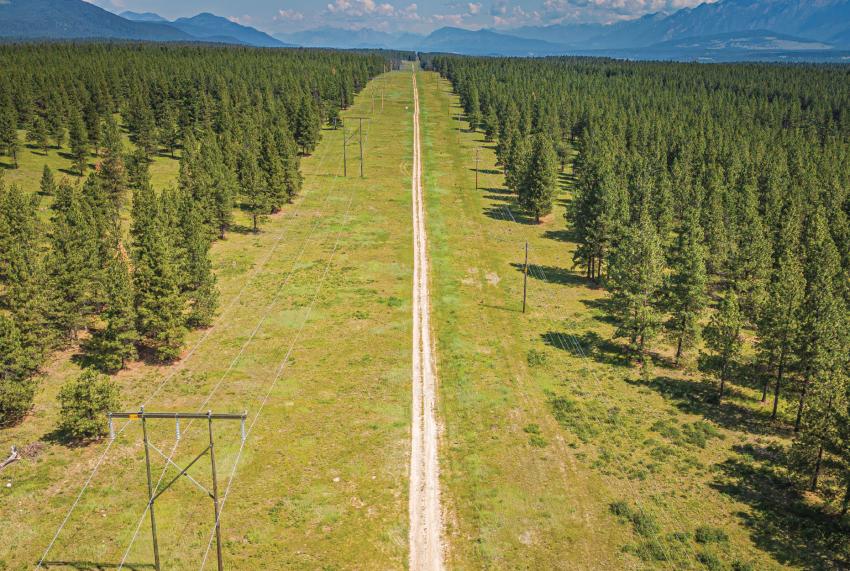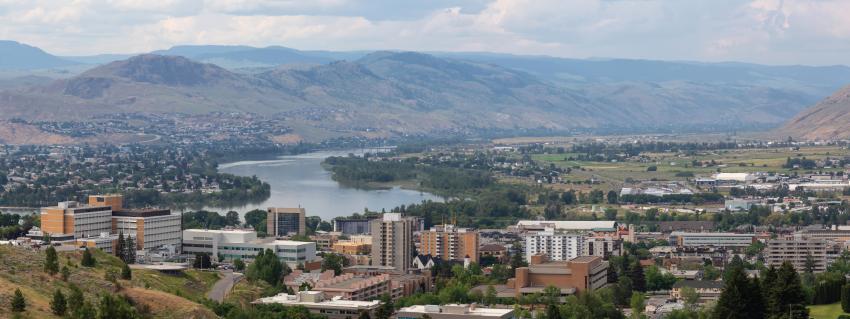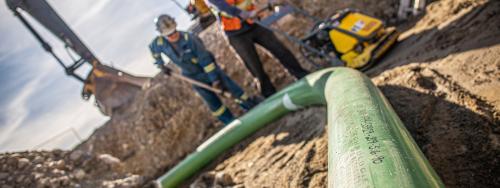About the project

Our interior transmission system moves gas through more than 700 kilometres of gas lines. Construction on the ITS Upgrade Project is expected to take two years and is scheduled to begin in Kamloops in May 2025. Construction will take a regionalized approach, moving from Kamloops to Penticton, Vernon, Oliver, Princeton, Spallumcheen, the Thompson-Nicola area and finishing in the Kootenays. All work will take place on, or near existing FortisBC facilities and rights of way.
Why we’re making these gas line upgrades

Michael Defeo, senior project manager at FortisBC, explains why we’re making this investment in our infrastructure and how it will help improve safety. “Our gas transmission lines have an excellent record of safety and reliability thanks to FortisBC’s rigorous maintenance and inspection schedule,” he says. “The upgrades we’re making will build on that. We already use in-line inspection tools to gather information about the condition of the inside of gas lines. This upgrade will allow us to use a new, more advanced kind of in-line inspection tool that will provide even more detailed information. This will strengthen our already high safety standards.”
Our maintenance and inspection schedule involves monitoring our transmission system 24-hours a day, 365 days a year. That includes regular detailed patrols of our transmission lines. During patrols we assess potential damage, ensure depth of cover is maintained and identify vegetation that could prevent us from accessing the gas line right of way. Our existing gas line inspection methods include a process called an integrity dig. We dig to expose a small section of gas line, then do a thorough close-up inspection of the outside of the line.
“Advanced in-line inspection tools are state-of-the-art,” Michael explains. “The additional information they provide will add a layer of safety. We’ll be able to use the information to proactively manage and plan gas line maintenance activities. This can help prevent problems from occurring.”
In addition to improving the method of how we analyze the condition of our gas lines, in-line inspection tools reduce ground disturbance and impacts to the surrounding lands. Michael continues, "In-line inspection tools provide up-to-date information by analyzing the entire length of the gas line. The inspection tool enters one end of the gas line and moves continuously through to the other end.”
Community feedback helped us prepare our CPCN project application
We received approval for the ITS Upgrade Project from our regulator, the BC Utilities Commission. They issued our Certificate of Public Necessity and Convenience (CPCN) in January 2024.
To help us prepare our CPCN application, we talked to municipalities, Indigenous groups and those living and working near the project work sites. We explained the project and what they could expect while work was underway. The feedback we gathered during these early conversations helped us understand their concerns and respond to them within our CPCN application.
Ongoing community engagement

Hayley Newmarch, community and Indigenous relations manager, FortisBC shares, “As we work on the ITS Upgrade Project, we’ll continue engaging with the community and listening to their feedback. That includes working with people who are directly affected by construction. This kind of open and transparent communication helps to avoid misunderstandings and builds trust with everyone.”
Project work will take place mostly within our own facilities and in rural areas. We don’t anticipate any major disruptions due to construction. However, we have plans in place to address potential concerns.
Hayley notes, “Our communication plans include contacting community members and Indigenous communities weeks before work begins. We want to make sure everyone is aware of the upcoming work and can plan ahead—such as deciding to take a new route around construction. We follow the bylaws of the community we’re working in. We’ll continue to work with the community to address any concerns that arise. Our goal is to complete construction safely, and as quickly as possible.”
We anticipate completing phase one of the project in October 2025, and starting phase two in April 2026. Visit our project page to learn more about the ITS Upgrade Project, and for project updates.
Questions? Call us at 1-888-486-0138 or email [email protected].



